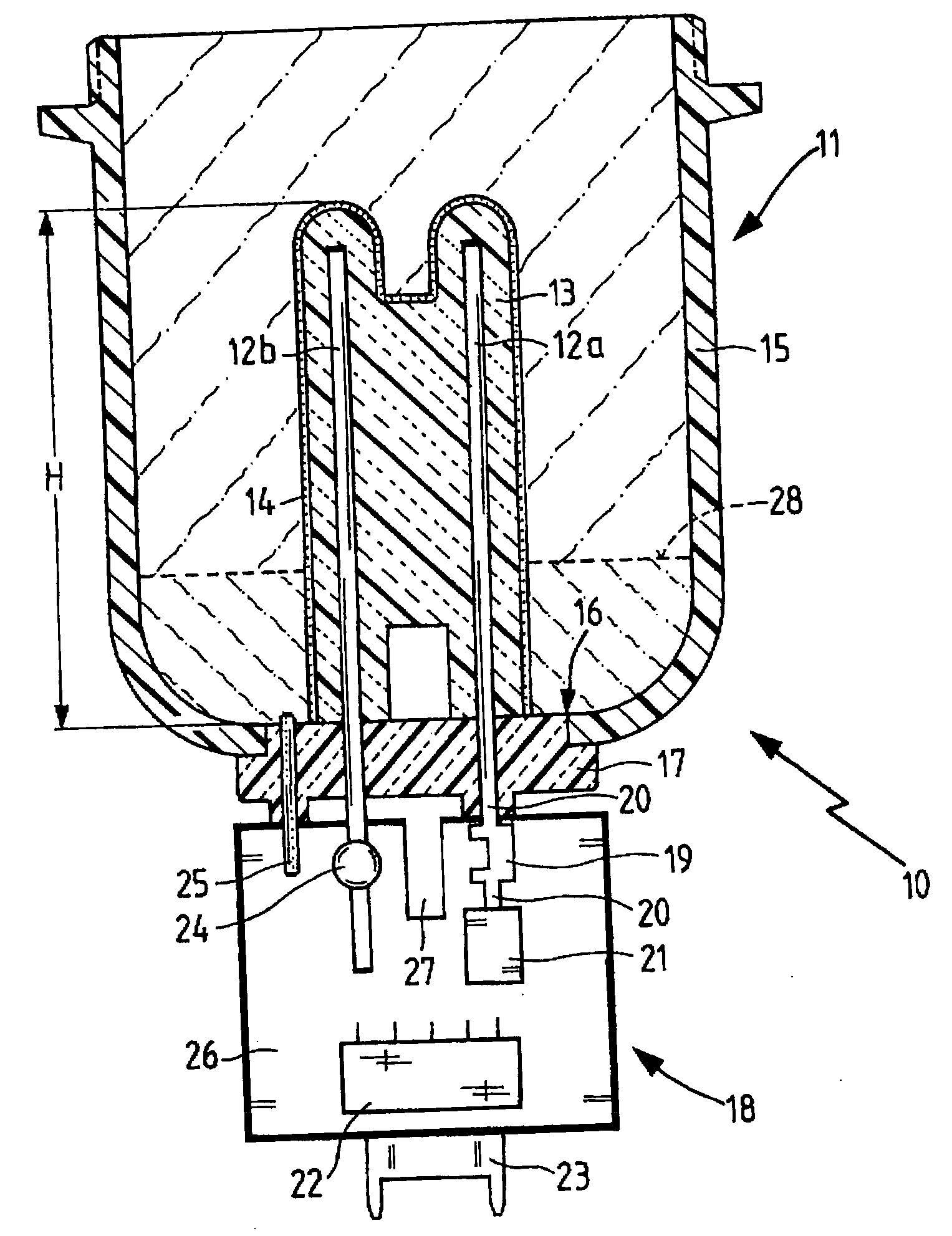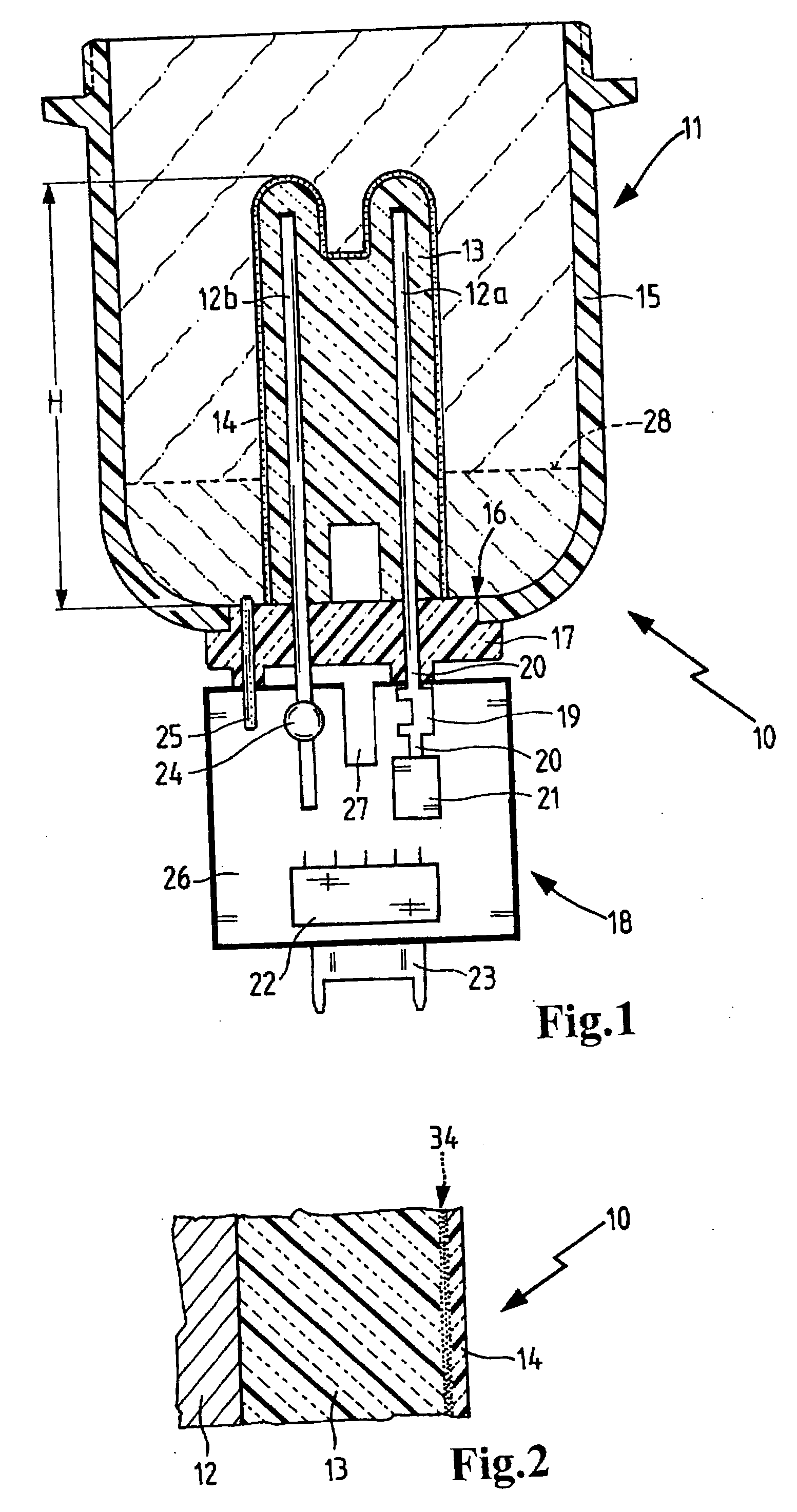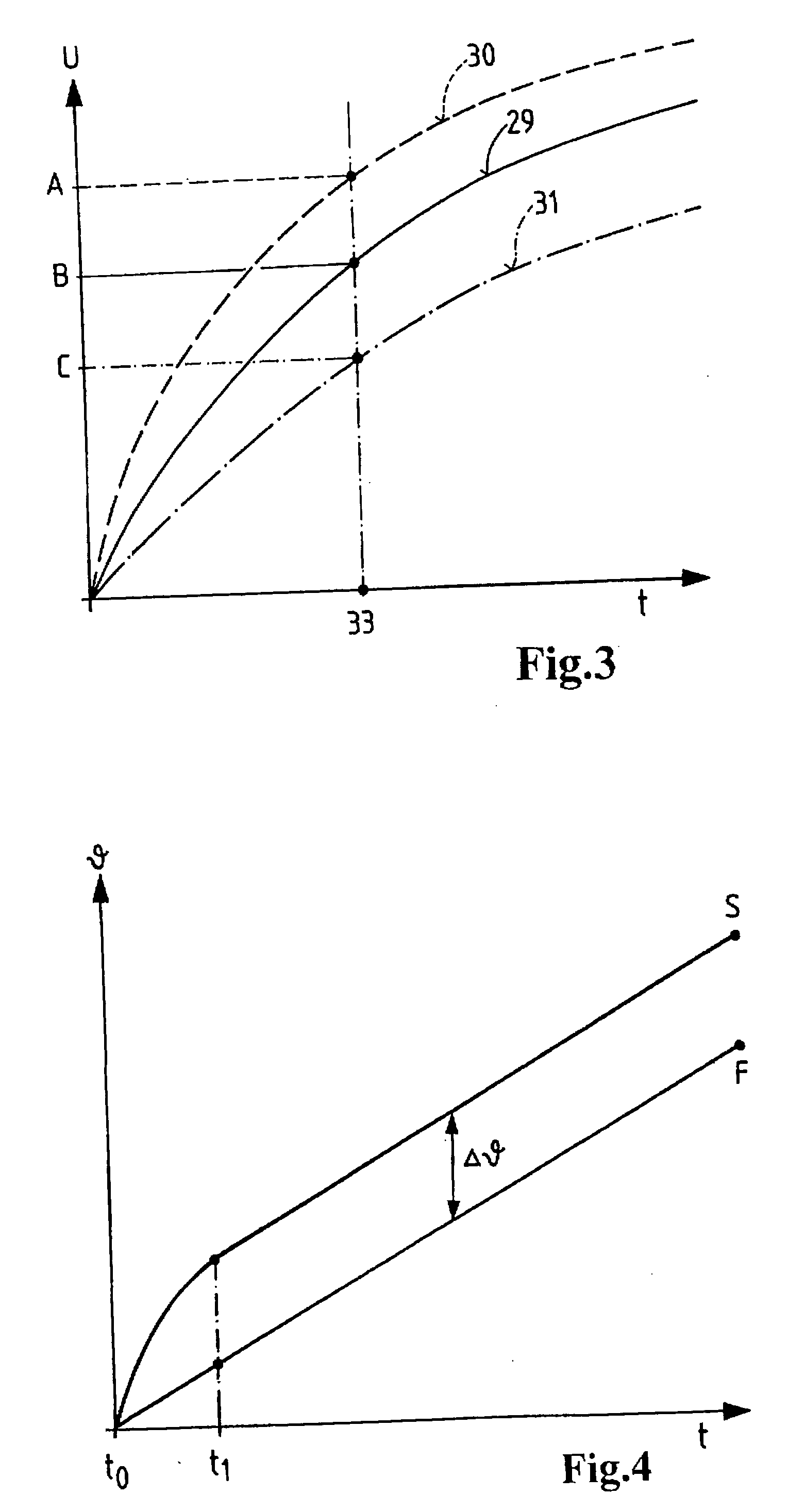Resistance heater
- Summary
- Abstract
- Description
- Claims
- Application Information
AI Technical Summary
Benefits of technology
Problems solved by technology
Method used
Image
Examples
Embodiment Construction
[0041]FIG. 1 shows a resistance heater 10 which is arranged on a housing 11. The housing 11 can be integrated into a fuel system via a flange (not shown). Resistance heater 10 has contact rods 12a and 12b, which are sheathed directly on their surfaces by a heating element 13. Contact rods 12a and 12b are made of a material which is a very good conductor of heat and electricity, in particular a metal such as copper.
[0042] The heating element 13 is arranged so it stands upright inside the housing 11 and extends over a height range H. The heating element 13 is formed by a material that conducts heat and electricity well, preferably a conductive synthetic resin (i.e. plastics) material. A plastic resistor material is especially suitable due to its properties. The plastic resistor material is made of a synthetic resin such as polyamide, polyphenylenesulfide or polypropylene using electrically conducting particles such as metals, carbon fibers, carbon black, graphite or a combination of ...
PUM
 Login to View More
Login to View More Abstract
Description
Claims
Application Information
 Login to View More
Login to View More - R&D
- Intellectual Property
- Life Sciences
- Materials
- Tech Scout
- Unparalleled Data Quality
- Higher Quality Content
- 60% Fewer Hallucinations
Browse by: Latest US Patents, China's latest patents, Technical Efficacy Thesaurus, Application Domain, Technology Topic, Popular Technical Reports.
© 2025 PatSnap. All rights reserved.Legal|Privacy policy|Modern Slavery Act Transparency Statement|Sitemap|About US| Contact US: help@patsnap.com



